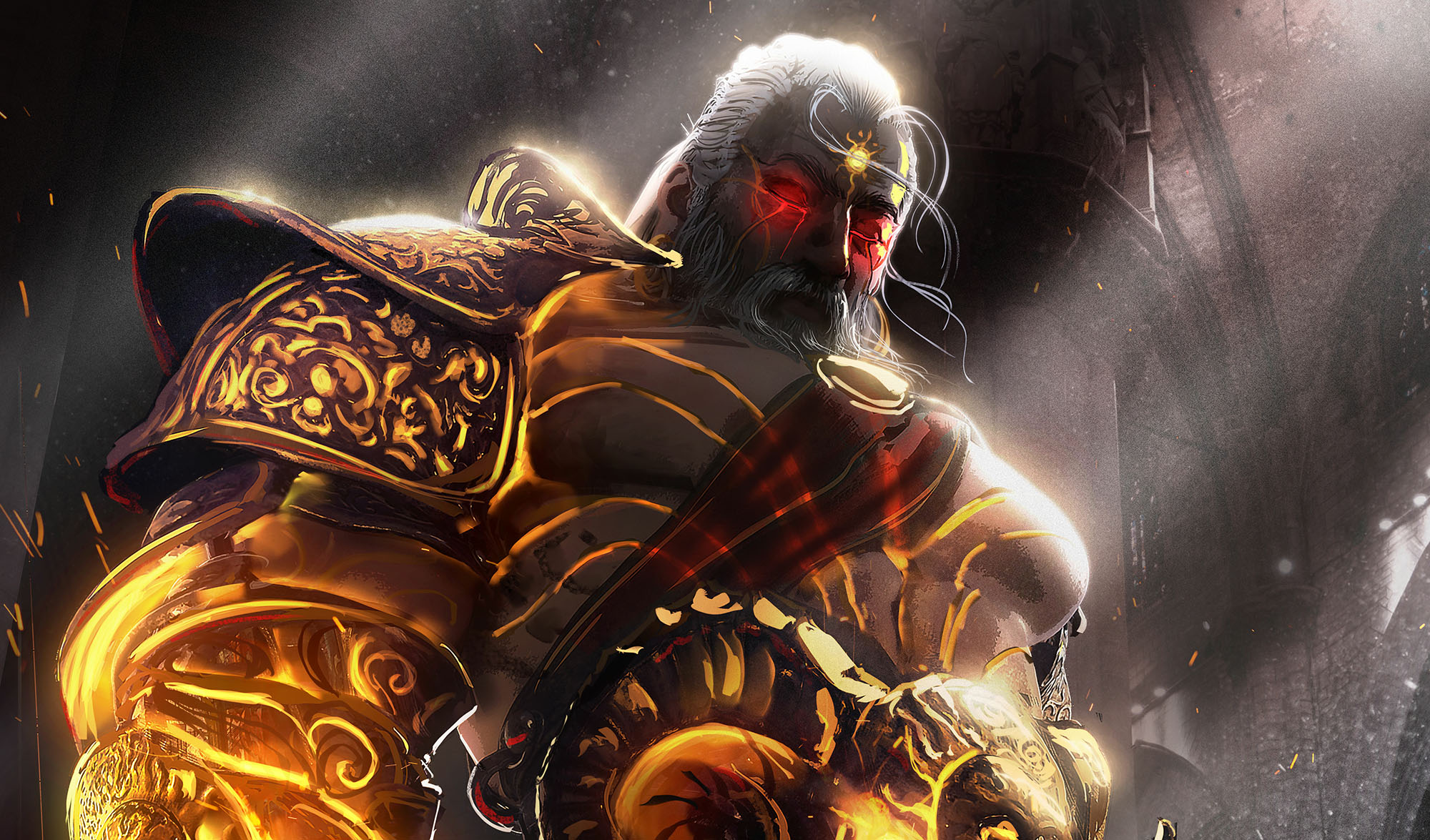
Sakurai: It was a good campaign, but I was surprised Seffi never showed up.
GM: Who?
Sakurai: Seffi. You know, the guy who betrayed my best friend and commanding officer, killing him right in front of my eyes and sending Kuradao into a fugue state?
GM: Oh. Yeah. I think I remember that. Kinda.
Whether on their own initiative or as part of a group effort to create campaign characters, your players will craft backstories for their characters. These backstories might be only a few sentences long or they might be ten-thousand-word epics, but either way they’re the foundation that the players’ characters will be built on.
And the PCs, of course, are going to be the main characters in your game. The action, the drama, the passion, the hopes, and the dreams of the entire campaign are all going to be focused on these protagonists!
Despite this, it’s shockingly common for GMs to go through all the rigamarole of creating elaborate backstories – often even encouraging the players to do so and collaborating with them! – only to immediately turn around, effectively throw those backstories into a paper shredder, and get down to the business of running the campaign they’ve prepared (and which has nothing to do with who the PCs are or what they want).
I think the influence of published adventures certainly plays a role here: The writers of these campaigns obviously can’t know anything about the specific characters that will be playing it, and so everything from the scenario hooks to the antagonists to the individual scenes must be, to at least some extent, comfortably generic.
So whether a GM is running a published campaign or simply following their example, it’s easy for them to unconsciously erect a firewall: The characters (and their backstories) are over there; the adventure is over here.
What you end up with are campaigns driven primarily, overwhelmingly, and even exclusively by a plot: By the simple sequence of what happens. It’s less than a plot, really, because even a plot in a novel or screenplay is generally understood to be the sequence of events driven forward by the actions of the protagonists. So what we’re left with here is just the shell or simulacrum of a plot; the most simplistic procedural elements of a story.
Note: What we mean by “plot” here is more expansive than simply the prepped plots discussed in Don’t Prep Plots, although prepped plots are probably even more susceptible to the problems we’re discussing here.
The problem, of course, is that our stories are not purely about plot. Arguably, the greatest stories are about the protagonists, and the plot is only a reflection of those characters (or an opportunity for those characters to be revealed and/or to develop and change).
Keeping our focus primarily on the PCs’ backstories for the moment, consider how much less interesting:
- Star Wars would be if Luke wasn’t Anakin Skywalker’s son and Obi-Wan wasn’t his former master.
- Die Hard if John McClane’s wife wasn’t one of the hostages.
- Inception if Cobb wasn’t fighting to return to his kids and if his wife wasn’t haunting his dreams.
- The Hobbit if Thurin was not the rightful heir of the Lonely Mountain.
- The Lord of the Rings if Frodo had not inherited the Ring from Bilbo.
And so forth.
USING THE BACKSTORY
There are, broadly speaking, two ways to use your players’ backstories and incorporate them into the campaign: You can either build the campaign from their backstories or you can adapt the campaign you have planned to include their backstories.
When it comes to adapting a campaign, I’ve previously discussed a technique called the campaign stitch that you can use to link multiple published adventures together into a single, seamless campaign. (The quick version is that you look for elements which can be unified: Can the village in Adventure A be the same village as the one in Adventure B? Can you replace the dwarf who hires the PCs in Adventure B with the sorceress who hired them in Adventure A?) You can simply extend the campaign stitch, but this time using the characters’ backstories as one of your source texts. For example, instead of either the dwarf or the sorceress, what if the PC is working for their uncle?
If you’re using the Alexandrian techniques for collaboratively creating campaign characters, this stitch can go both ways: If there’s not a convenient uncle to serve as the party’s patron, see if there’s a way that you can work with one of the players (or all of the players!) to incorporate the sorceress from Adventure A into their backstories.
Do this for NPCs, locations, McGuffins, and literally anything else you can glean from your PCs’ backstories. It’s virtually impossible for a PC to be too connected to the campaign.
On a similar note, if you’re building your campaign from the PCs’ backstories, you’re basically going to loot anything that’s not bolted down. (And nothing is bolted down.)
Start by identifying the goals of the PCs. Each goal is at least one scenario, and likely more than one: They want a valuable item (a stolen heirloom, the cure for their mother’s disease)? Put it some place secure and you’ve got a raid. They’re trying to discover something (the identity of their brother’s killer, the local of the Lost City of Shandrala)? That’s a mystery, so start building your revelation list. (You can spread the clues around the entire campaign and/or throw it into a 5-node mystery or anything between.)
As part of this, identify the antagonists. It’s not unusual for the PCs’ backstories to be filled with people who have wronged them; people who they hate; people who stand opposed to everything they want to accomplish in life. Grab some or all of them and start setting them up as obstacles the PCs have to overcome to achieve their goals.
Once you’ve got this material lightly sketched in, simply link the scenarios together using whatever campaign structure makes the most sense. (When in doubt, use a 5 x 5 campaign.) Or, alternatively, arrange them into multiple campaign structures, each acting as a separate arc within the greater campaign (running either concurrently or sequentially).
Advanced Tip: These scenarios are easy to hook because the PCs are already motivated to do the thing or find the thing. But mix things up a bit with some surprising scenario hooks, where the PCs think they’re doing one thing only to discover halfway through the adventure that this is actually about the ONE THING THEY’VE ALWAYS WANTED. You can also heighten the dramatic tension by using a dilemma hook as a surprising twist: Someone the PCs’ care about tells them where they can find the McGuffin from their backstory… but only because they want them to do something completely different with the McGuffin than what the PC wanted.
Continue your work by harvesting setting material (locations, factions, etc.) and pulling your supporting cast. Not every single character and location from the PCs’ backstories needs to show up in the campaign, of course, so think about which ones are the most interesting to you. And which ones do the players’ seem most invested in?
While you’re doing this, do some stitching and look for opportunities to link the PCs’ backstories: Could an NPC from Character A’s backstory be marrying Character B’s sister? Can characters be from the same place or belong to the same organizations or work for one another? Can Obi-Wan’s former apprentice and Luke’s father be the same person?
(And, as I already mentioned, you can also collaborate with the players to take two different characters and make them the same person. For example, one of the PCs’ is friends with the druid Allanon and another PC has a very similar wizard named Gandalf who was friends with their adopted father Bilbo. Couldn’t these both be the same guy? If so, it could be a cool link between these PCs that explains why they’re adventuring together at the beginning or the campaign; or an easter egg that they only discover after journeying together for many moons.)
As you’re doing this, regardless of which approach you take to incorporating character backstories, make sure to balance spotlight time. (Or perhaps it would be more accurate to say that you should lay the groundwork that will ensure a future balance in spotlight time.) In other words, don’t build a whole campaign around just Frodo’s uncle and his magic ring, include some stuff about the kingdom Aragorn and Boromir have connections to; the lost dwarf kingdom Gimli apparently yearns for; and maybe toss in some elf havens since both Aragorn and Legolas talk about those in their backstories.
Similarly, don’t feel like you shouldn’t create your own stuff while doing this. In fact, you obviously should. Not everything in the campaign needs to be incestuously born from the PCs’ backstories.
Note: There are many RPGs that will help bring backstory elements into play by mechanizing them or incorporating them into core gameplay loops. For example, Trail of Cthulhu and Night’s Black Agents both use Sources of Stability – major NPCs who the PCs have to interact with in order to regain Stability through a human connection in the face of a horrific universe.
TABULA RASA CHARACTERS
In order to use a backstory, of course, you first need to have a backstory. While some players will give you paragraphs or pages full of information, others might only give you a couple sentences or even nothing at all.
And that’s just fine.
You may feel like these players don’t care about the game, but that’s usually not the case. Most of these players just have a preference for sketching in a few broad concepts and then discovering and developing who the character is through actual play.
Such characters aren’t exactly uncommon in other mediums, either. Consider Neo in The Matrix or Bilbo Baggins in The Hobbit. At the beginning of their stories, both are tabula rasas serving as everymen that the viewer or reader can readily step into as a POV character. In an RPG, the tabula rasa character similarly serves as an easy role for the player to assume and begin exploring your world.
As you’re integrating or building from backstories, however, there are a few things you can do with tabula rasa characters. (After all, just because these characters are being developed during play, you don’t want them to be slighted when it comes to spotlight time.)
First, if you’re using the campaign character creation methods I’ve mentioned before, you can usually add a little flesh to the bones of these characters. Don’t feel like you need to dump a whole bunch of unwanted detail on the player — again, the tabula rasa approach is perfectly legitimate — but you can use this to plant a few seeds.
One particularly useful technique is to link them to some lore. Bilbo Baggins, for example, lives in the Shire. Bilbo’s background details can remain pretty sketchy, while the meatier lore of the Shire (and, for example, Gandalf’s long-standing relationships with the hobbits of the Shire) can do a bunch of heavy lifting.
Another approach is to link them to another PC. For example, consider Merry and Pippin from The Lord of the Rings. We know virtually nothing about them, but they’re friends with Sam and Frodo, which gives them a link to all the stuff in Frodo’s backstory that we’re building our campaign around.
GM DON’T #19.1: UNDERMINING THE BACKSTORY
Another major mistake you can make is undermining a PC’s backstory. The classic example is targeting characters from the PCs’ backstory and killing them off.
Part of the problem here is turning the backstory into an endless liability instead of a boon. It’s also about taking something that the player felt was fundamental to their character’s identity or that they wanted to be something fun to play with during the game and, instead, destroying it.
Players will respond to this by either creating tabula rasa characters (“if I don’t give the GM anything to destroy, then I’m safe”) or character backgrounds filled with endless tragedy (“if my character has already lost everything and everyone they ever cared about before the GM destroys them, then at least it’s on my terms and it’s the core identity of my character”).
The trick, though, is that the line between building on a character’s backstory and undermining it can be razor thin and very dependent on context.
Start by understanding the character’s goals and how those flow from the backstory. If you can understand the core concept of the character and how the player intends to run their character, you can make plans that harmonize with those intentions instead of harming them.
You can help yourself out here by, when the campaign is young, not leaping directly to destructive uses of the PCs’ backstories. Even if a player isn’t entirely happy about how you used their teddy bear, it’ll be a lot easier to course correct if you haven’t ripped off the teddy bear’s head.
I’m not saying that you should never burn down the PC’s hometown. I’m just saying that you’ll probably be more successful if that’s not the FIRST thing you do with their hometown: First, because after spending some time with the character (and possibly their hometown) you’ll have a much better understanding of where the players’ lines are. Second, because if the hometown has been in play for a while, then the player may have done the stuff they dreamed of doing with the hometown when they created their character and won’t feel cheated by the development. Third, because it’s more likely that such events will have grown naturally out of the narrative and the PC may even bear responsibility for what happened. (“I’m sorry your hometown got burned to the ground, but maybe you shouldn’t have told the Bloodtyrant where you lived before pissing her off.”)
Finally, when in doubt, you can just talk to the players and ask them. “What role do you see your hometown playing in the campaign? Are there any lines you don’t want me to cross?” With a little care, these are conversations you can have without spoiling anything. For more details on this, you can also check out RPG Flags: Wants vs. Warnings.
















